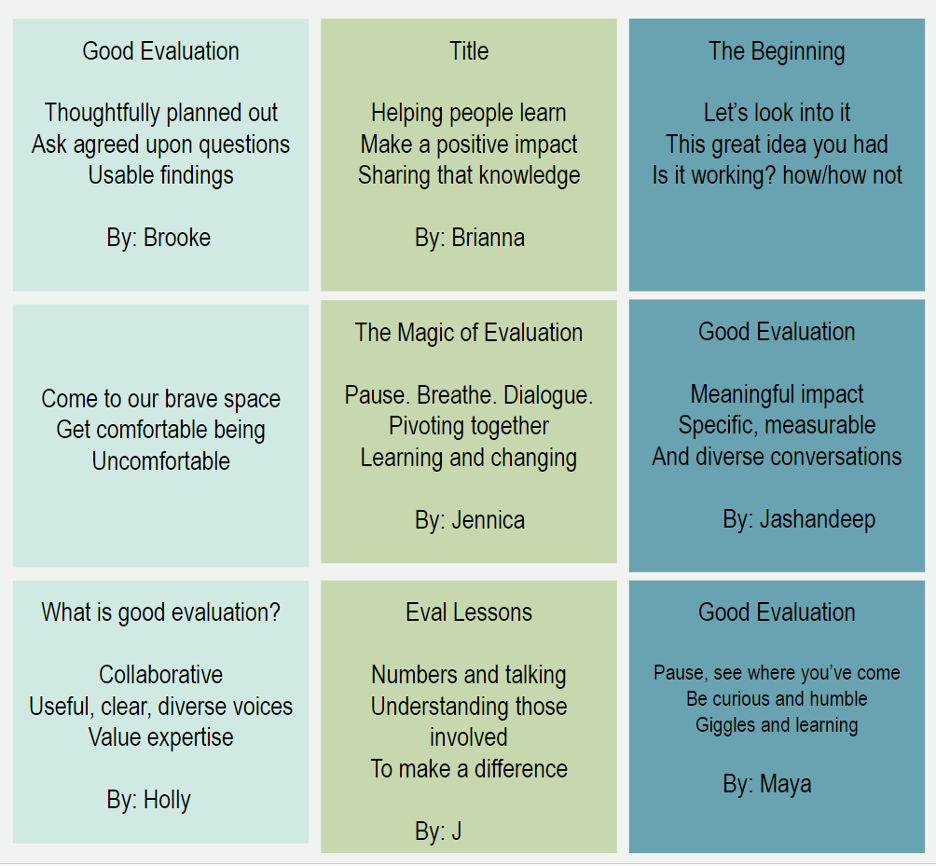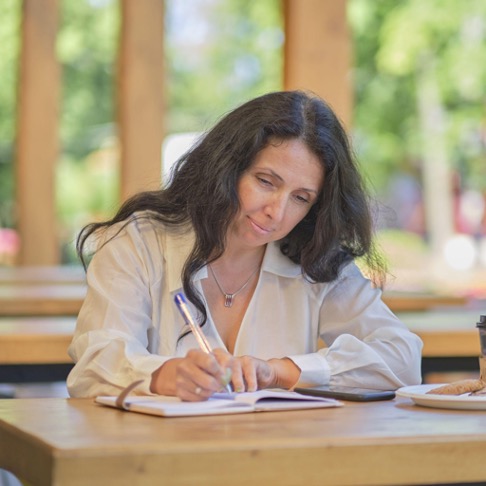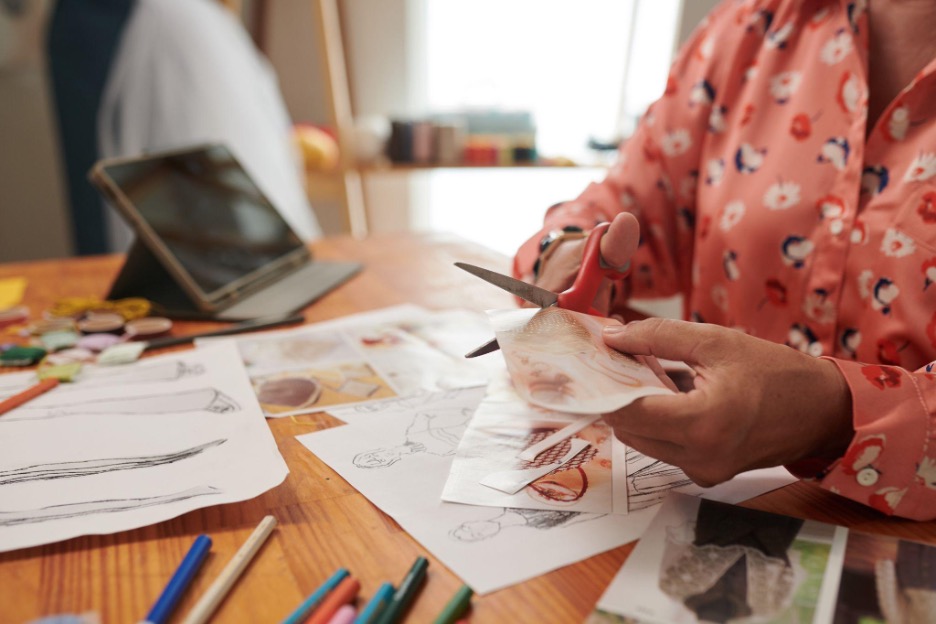Imagine that you’re facilitating a meeting during an evaluation project, and it seems like your group is shutting down. You’re getting nervous that a lack of engagement could impact the project and stall your data collection.
But you’re a creative thinker, so you know that haiku poems can be a great way to get people communicating again. Let’s break out the paper and pens!
With a few easy instructions, you ask everyone to write a quick, simple poem in response to a new question. People start smiling as they discuss their word choices with their neighbours.
The group has re-engaged, all because you included a thoughtful creative exercise in the evaluation process, and you can breathe again!
What is Arts-Based Evaluation?
Sometimes our experiences are hard to put into words, so art can help. Arts-based facilitator methods can allow people to access their full potential in an evaluation project by encouraging them to participate, contribute, and commit to the dialogue and solutions.
In an evaluation, arts-based methods are often used to facilitate qualitative data collection. Asking people to describe their experiences in a program can help you gather nuanced information: there’s a world of difference between someone telling you that they were “highly satisfied” and “it was a magical day.”
Using arts-based methods can also bring clarity to collection methods like focus groups or interviews: giving people something to do with their hands often leads to sharper concentration in meetings.
There are a lot of ways that this can be accomplished!
Poetry
Poetry encourages participants to really think about how to best describe their experiences while carefully considering what words they choose and why. Poetry can also encourage participants to share their emotions more openly.
In October, during our last conference, we explored the use of poetry for evaluation and reflexive practice. Jennica Nichols and Maya Lefkowich of AND Implementation guided the group through penning some haikus (image below)!

Building
During in-person events, sculpting and building activities such as creating with Lego can be a great way to foster positive group dynamics through “playing” together. It uses visual and kinesthetic skills to build three-dimensional shapes, provides a method for everyone to participate, and provides starting points for discussion. Lego, for instance, encourages creative thinking and problem-solving as participants build physical models of challenges or experiences and then discuss how to solve them.
Lego introduced a process called Lego Serious Play, where facilitators ask their participants a question—from “Where do you want to be in five years?” to “What problem are we trying to solve?”—and folks build models that give a visual answer to the question. The facilitator then guides participants in sharing what they’ve built and reflecting on themes and information that emerge from the discussion. At CES-ON, we used Lego Serious Play during our 2015 AGM to engage participants in reflecting on their perception of evaluation.
Drawing
Drawing invites introspection and creative thinking and can provide an opportunity for “quiet” participants to be engaged and contribute. It can also be useful to shake up power dynamics, as even authority figures can feel vulnerable when drawing. Creating original drawings, even cartoony ones with crayons invites participants to think abstractly and promotes the use of metaphor.

Some added benefits
During the haiku workshop at our conference, many participants were surprised that the haiku exercise could be an effective tool for
- Reflecting on evaluation findings
- Busting through blockages
- Obtaining feedback that wouldn’t have arisen through traditional methods
- Getting to know other participants of an evaluation project
- Cutting the tension
The process of creating art provides something for participants to talk about. It provides a shared experience that encourages reflection and opens dialogue or keeps conversations rolling.

Things to keep in mind
Arts-based methods can be incredibly useful, but it is also essential to be mindful of the best times to use them. Not every situation is appropriate for an art activity!
We also need to remember that arts-based reflexive practice can’t be a shortcut to an ethical evaluation practice. We still need to pay attention to our relationships and methods.
For more thoughts on the topic and some considerations on the best times for arts-based methods versus when other methods would be preferable, check out @AND Implementation’s article, “Arts-Based Methods in Evaluation 101”.
Sources:
https://www.lego.com/en-us/themes/serious-play/background
https://www.linkedin.com/pulse/arts-based-evaluation-dos-donts-sally-fort-izfmc%3FtrackingId=Ug5KRPpbT2qs%252B1uGM1093w%253D%253D/?trackingId=Ug5KRPpbT2qs%2B1uGM1093w%3D%3D
https://www.andimplementation.ca/post/arts-based-101

